Myth # 1:
If my property is listed on the National Register of Historic Places, it will be protected forever and can never be demolished.
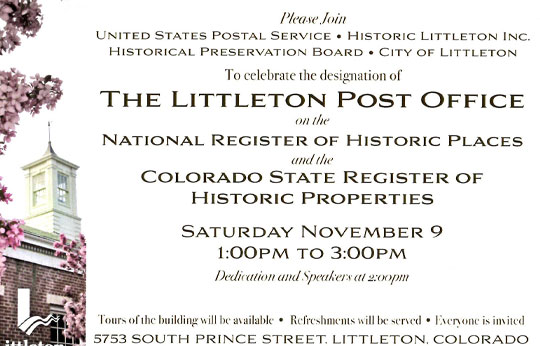
Fact: You may have heard that a property listed on the National Register can never be demolished or altered, and that the government will step in and protect any threatened property. In fact, no such protection exists in federal or state laws. Property owners can do whatever they want with their property according to their local zoning laws. It is the local historic preservation laws that protect historic properties.
Above, Post Office Dedication Invitation.
Myth # 2:
If a property is designated as a local historic landmark, it’s protected forever and can never be demolished.
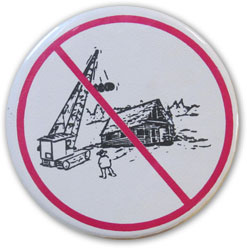
Fact: Local landmark designation ensures a more thorough review of demolition proposals, but it does not prohibit demolition outright. The Littleton Historic Preservation Code encourages the preservation and reuse of historic building. Demolition can be permitted, however, if no other demonstrated financially viable option exists.
Above, don’t tear it down button, preservation promotional item.
Myth # 3:
Historic designation will lower my property values.
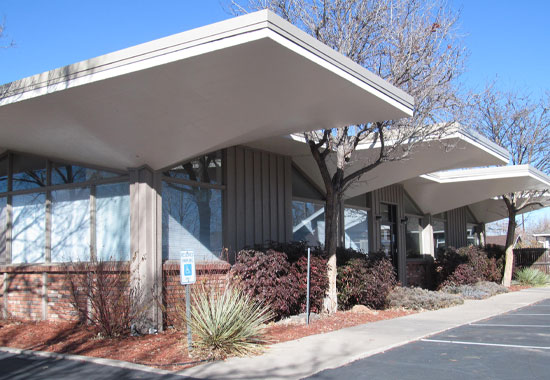
Fact: Study after study across the nation has conclusively demonstrated that historic designation and the creation of historic districts increase property values. A number of people and institutions have used a variety of methodologies to study historic districts all over the country, the most interesting thing is the consistency of the findings. Far and away the most common result is that properties within local historic districts appreciate at rates greater than the local market overall and faster than similar non-designated neighborhoods.
Why? In part because historic designation gives a neighborhood or an individual historic site a cachet that sets it apart from ordinary properties. Many buyers seek out the unique qualities and ambience of a historic property. Historic district designation gives potential homebuyers two rare and economically valuable assurances: that the very qualities that attracted them to their neighborhood will endure over time, and that they can safely reinvest in sympathetic improvements to their home without fear that their neighbor will undermine this investment with a new mini-mansion or inappropriate new development.
Read more in Economic Impacts v5-FINAL.pdf (achp.gov) published by the Advisory Council for Historic Preservation by PlaceEconomics or The Economic Benefits of Preservation by Donovan Rypkema, published by the National Trust for Historic Preservation, or The Economic Power of Heritage in Place: How Historic Preservation is Building a Sustainable Future in Colorado Technical Report (novoco.com) by History Colorado.
Above, Former Mr. Steak Restaurant, Mid-Century Modern, Littleton Blvd.
Myth # 4:
If my property is designated historic, I won’t be able to change it, and I will have to open it for tours.

Fact: Owners of designated historic structures can make significant changes to their property. Historic preservation laws, at their essence, are not meant to prevent change; they are intended to manage change. Historic district designation regulates only renovations that are readily visible from the street. The Secretary of Interior’s Standards for Rehabilitation is the nationally accepted benchmark for evaluating changes to historic structures. The standards do not require that every element of a historic site remain intact—you need not keep every doorknob!
The most significant, or “character-defining,” historic elements of a property should be retained, however. Additions to the historic property are allowed but they should be compatible with the site’s historic architecture. The standards urge the repair of deteriorated historic features, but they do allow for replacement when the severity of deterioration leaves no other option.
Historic designation itself does not impose any regulations on the design and use of a building’s interior. If you receive tax credits or some type of grant for your rehabilitation efforts, on the other hand, your interior work would be subject to review and approval.
No law exists that would require you to open your house or building for tours, regardless of its listing on the National Register of Historic Places or its local landmark designation.
Above, Quinney House, Littleton Landmark.
Myth # 5:
Historic districts impede and restrict business growth.

Fact: Historic preservation is at the very heart of our nation’s most vibrant economic development and business attraction programs. Study after study shows that historic preservation efforts such as the Downtown Littleton Main Street Historic District promote and stimulate local businesses and economies. Historic preservation and historic districts create jobs, increase property values, use existing public investments, support small businesses, revitalize Main Streets, and attracts visitors and tourist.
Read more in Technical Report 2017: Preservation for a Changing Colorado.
Above, Littleton Main Street Historic District sign.
Myth # 6:
Government money is available to help me repair and preserve my historic building or house.
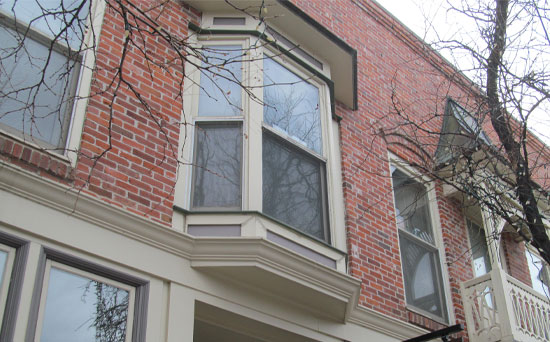
Fact: The amount of money available to help you rehabilitate a historic house or building through direct grants or foundations is limited. Many of the available grants require a financial or other type of material commitment from the property owner. What is available tends to be tax incentives, such as the Federal Rehabilitation Tax Credit, for private owners of historic buildings that are listed in (or eligible for) the National Register of Historic Places or State Registers of Historic Places.
Federal and state tax laws provide tax incentives for historic preservation projects that follow the Secretary of the Interior’s Standards for Rehabilitation. These credits allow taxpayers to reduce, on a dollar-for-dollar basis, the amount of income tax they owe to the government. The amount of credit that can be obtained is calculated as a percentage of the overall rehabilitation costs associated with the project. If you want to rehabilitate your income-producing property, such as a downtown commercial building, you may be eligible for the 20% federal tax credit and/or the 20–35% Colorado state tax credit for your qualified costs. Colorado also gives a 20–35% tax credit for the rehabilitation of historic, owner-occupied residences. Find details here: Preservation Tax Credits, History Colorado.
Both programs require review by the Colorado State Historic Preservation Office, which is responsible for ensuring that any work you do is in keeping with the character of your house or building. In addition, National Register properties are eligible to benefit from conservation easements (binding legal agreements with preservation organizations that can allow owners to claim a charitable deduction on their federal income taxes).
The City of Littleton also provides local incentives for preservation projects. Find details here: Historic Preservation – Littleton CO.
Above, Abbott Building, Littleton Main Street, Received a preservation restoration grant in 2003.
Myth # 7:
Historic preservation is only for fancy and expensive homes. There is nothing special about my property or street.
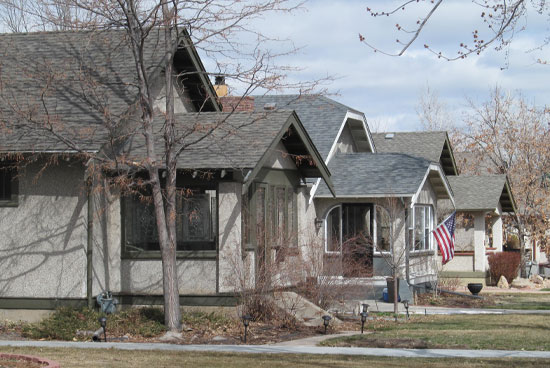
Above, Louthan Street Local Landmark District.
Fact: Historic preservation applies to properties far beyond just the high style homes of the 19th and early 20th centuries. Historic preservation is a significant part of community planning decisions and quality of life issues. Older neighborhoods with modest architecture often have a particular character and historical importance in the development of a community. Every neighborhood and downtown has a different story to tell, and these stories are expressed in the houses and buildings along the street.
Myth # 8:
Restoring an older building costs more than new construction.

Fact: Although each rehabilitation project is different, it is typically more cost-effective to restore an older building than to pay for new construction. Upgrading an older commercial building or house is usually less expensive than demolition plus construction of a comparable new building. Older buildings often contain long-lasting materials that can be retrofitted to be more energy efficient. Also, a rehabilitation project may be eligible for a 25% state historic preservation tax credit for residential properties or a 20% federal tax credit for income-producing properties.
Above, Havener Millinery Building, Littleton Main Street, Façade Restored in 2010.
Myth # 9:
“Preservation is an un-American violation of property rights.”
Fact: Historic preservation laws no more infringe on property rights than do many other laws and rules that Americans have long accepted. The intention of historic preservation standards and laws is to protect your property rights, not take them away. Your community’s zoning code helps to maintain and enhance property values in designated historic districts. If you own a historic house, historic building or property in a historic district, you can count on the local design review process to help preserve the historic character of the neighborhood. This preservation of historic character enhances everyone’s property and resale values. Without historic district zoning, your neighbor could build or remodel in such a way that detracts from the area’s historic character and negatively affects your property.
If you live in a condominium or HOA community, your property rights are limited by Covenants, Conditions, and Restrictions (CC&Rs), documents that can legally prevent you from owning a pet, washing a car in your driveway, or having a basketball hoop over the garage. CC&Rs are far more onerous than historic preservation laws yet are commonly accepted even by vocal property rights advocates.
Myth # 10:
Preservationists are always fighting new development and only care about the past.
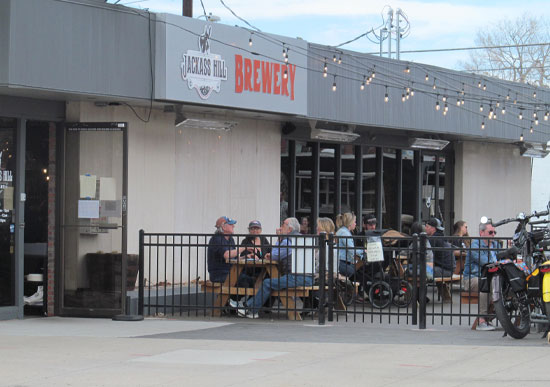
Fact: Historic preservationists do care deeply about the past. Generally, they are not just bemoaning the passing of a bygone era. Rather, preservationists are anchoring themselves to move forward into the future. Historic preservation is not about stopping change, and it is certainly not about squeezing out creative and exciting new architecture and development. Preservation allows us to retain the best of our shared heritage by preserving sites of unique quality and beauty, revitalizing neighborhoods, spurring economic revitalization, and, quite simply, creating better communities.
Above, Jackass Hill Brewery, Littleton Main Street, in the former Mid-Century Modern Van Schaak Real estate office.














